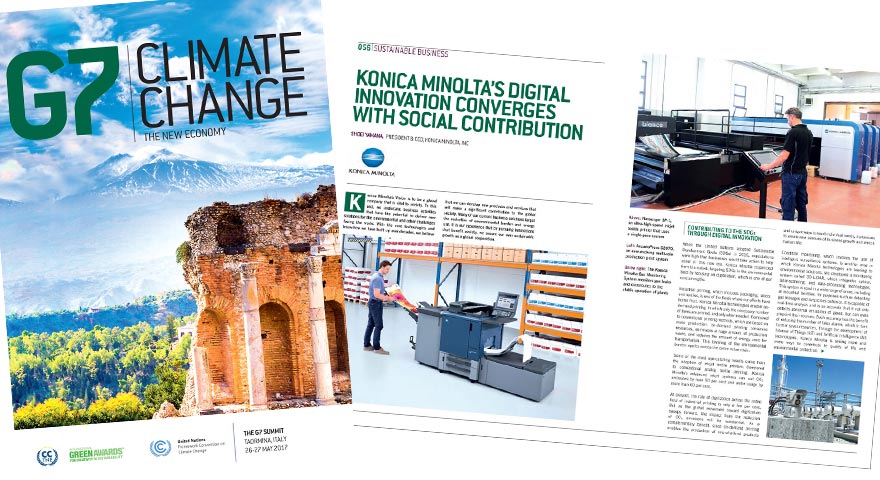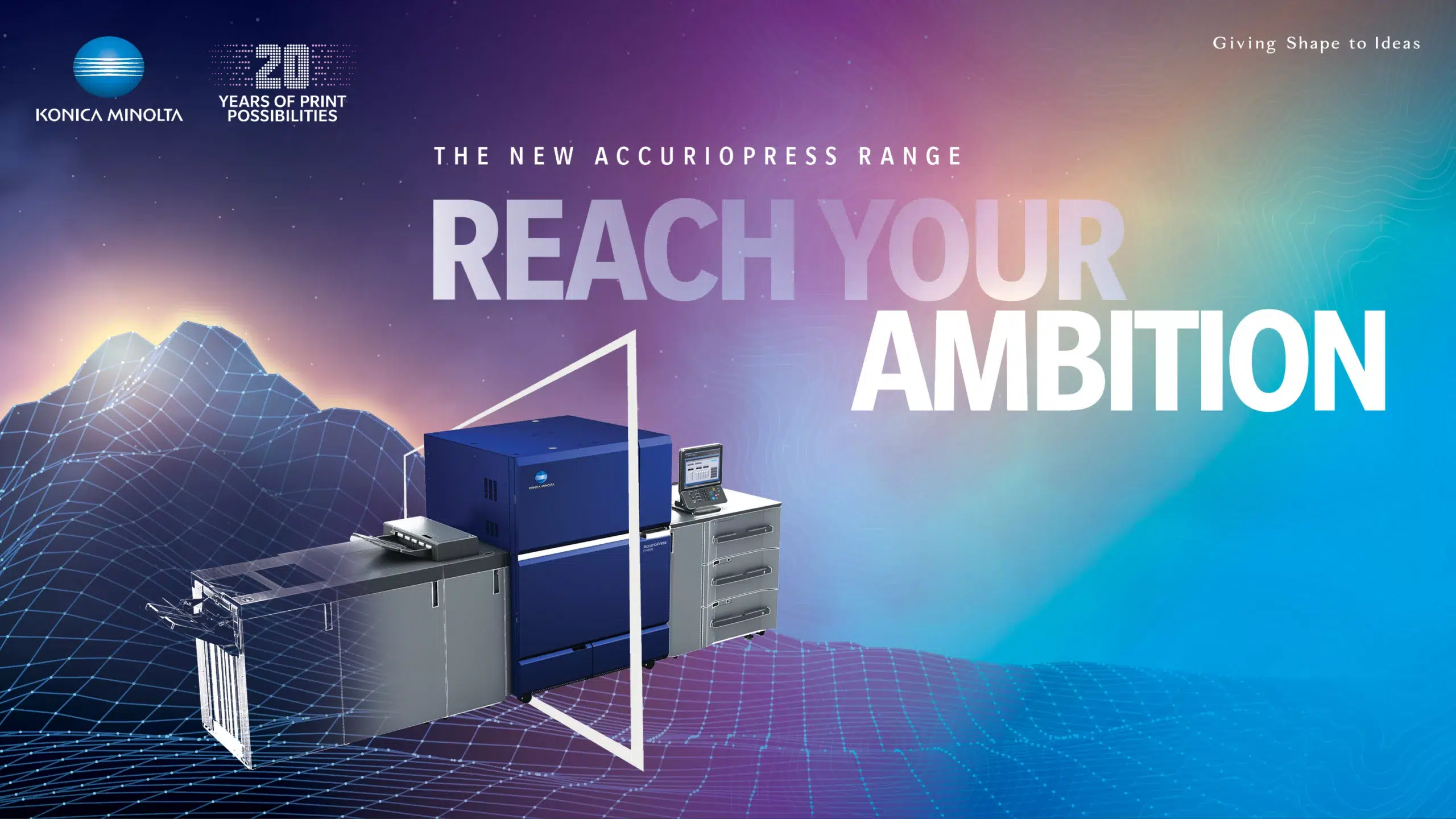Climate change remains one of the most significant issues facing businesses today. As part of our commitment to social contribution, Konica Minolta has submitted a four-page advocacy to the publication, G7 Climate Change The New Economy (CCTNE), which focuses on accelerating environmental contribution through co-creation of new value.
CCTNE is the flagship magazine published for the annual G7 Summit and the Conference of the Parties (COP) convention. It’s distributed to world leaders, global corporate business leaders, and universities, as well as G7 attendees, and first- and business-class passengers in 20 international airlines. The magazine is also made available online for the public.
It’s essential for businesses to maintain a connection between growth and social contribution and climate change is a key area for this. Konica Minolta pursues innovation in all areas, and that includes finding new ways to contribute socially.
Here are just a few of the things Konica Minolta is working on to contribute to a better environment:
- In 2009 we initiated our long-term environmental vision, Eco Vision 2050, which guides us in our responsibilities. New Eco Vision 2050 adds the goal of ‘carbon minus’. This drives our philosophy of information sharing to help other companies and communities to lower their environmental burden.
- When the United Nations adopted Sustainable Development Goals (SDG) Konica Minolta responded immediately by focusing on digitisation and offering technologies such as on-demand printing to reduce wastage.
- Compared to conventional textile printing, our advanced inkjet systems can cut CO2 emissions by over 90 per cent and water usage by more than 60 per cent.
- We’re developing carbon monitoring solutions through intelligence surveillance systems, which can be used for purposes including detecting gas leaks or even suspicious behaviour. It’s so accurate it can even pinpoint the source of a gas leak.
With these and other initiatives, Konica Minolta will continue to help make the world a better place.
View the full article here: http://publications.climatechange-theneweconomy.com/g7-2017/56-1




